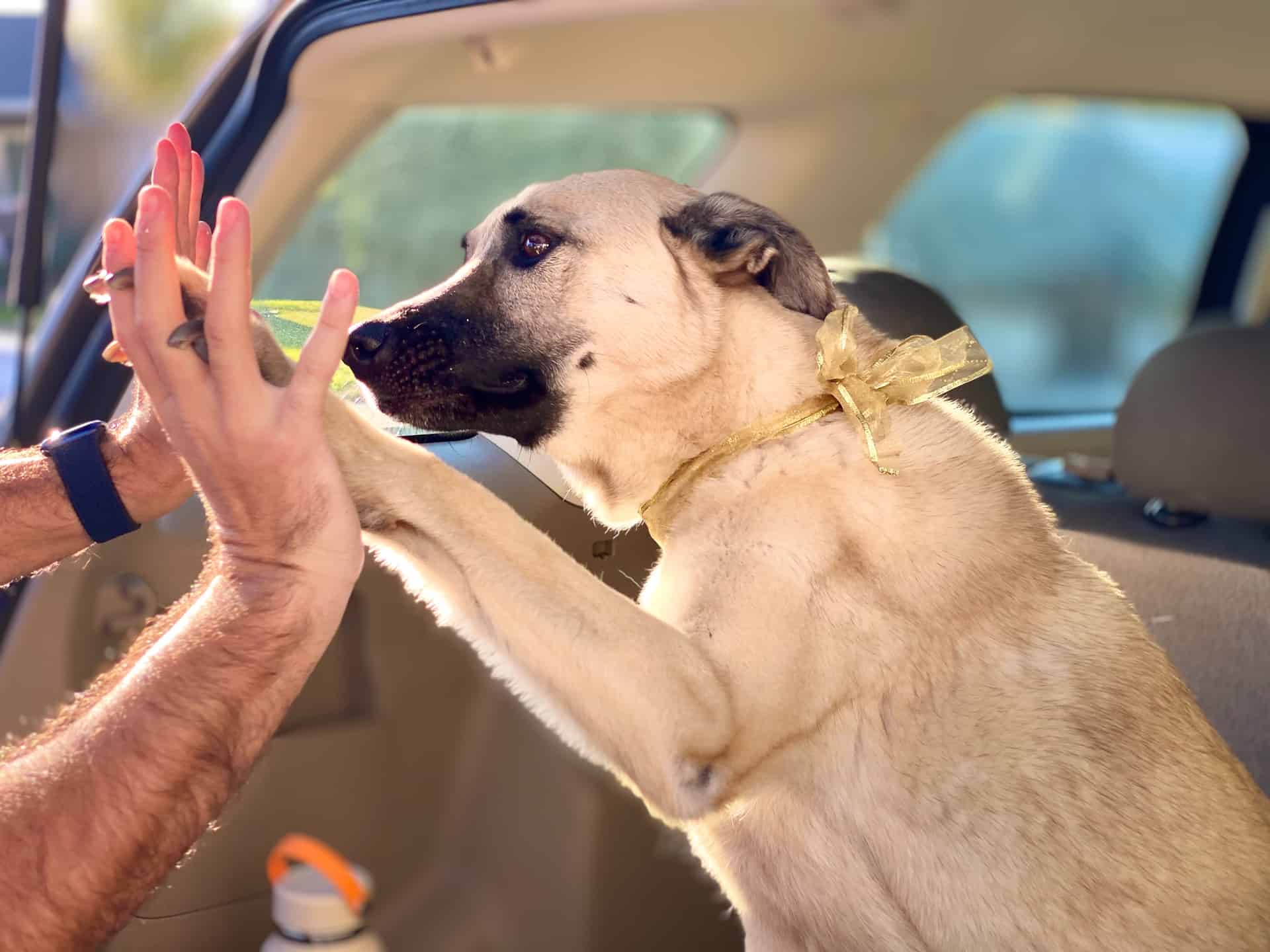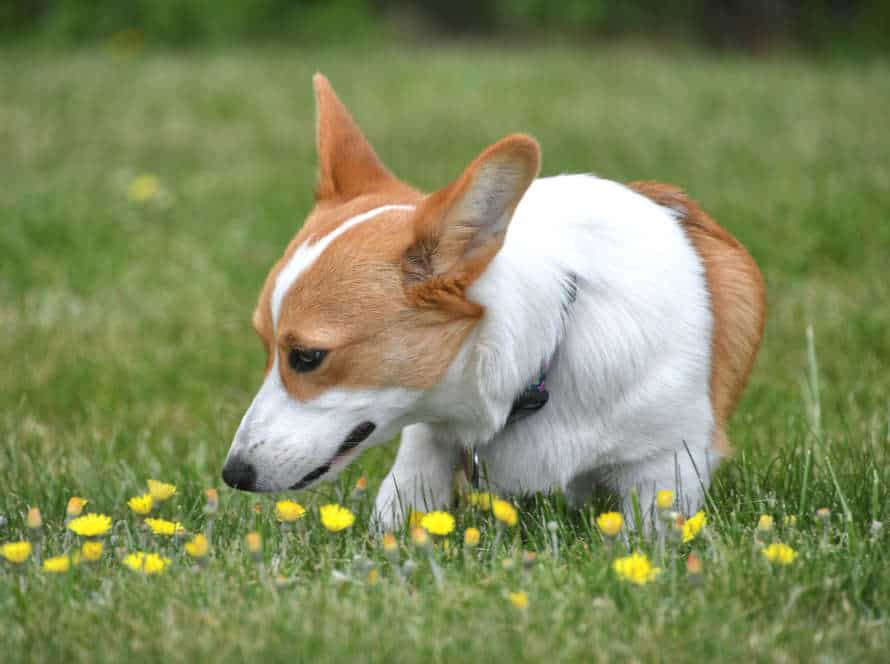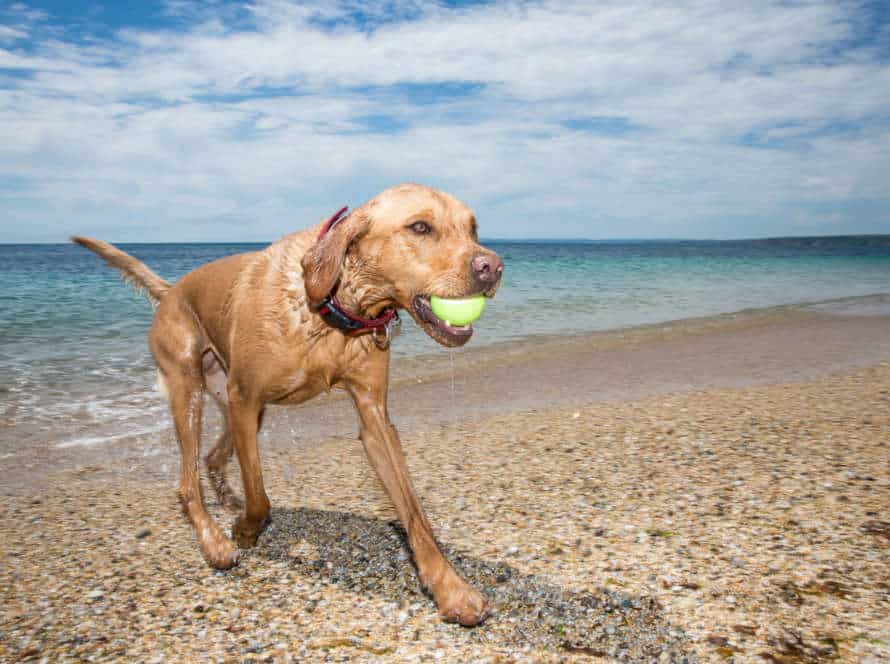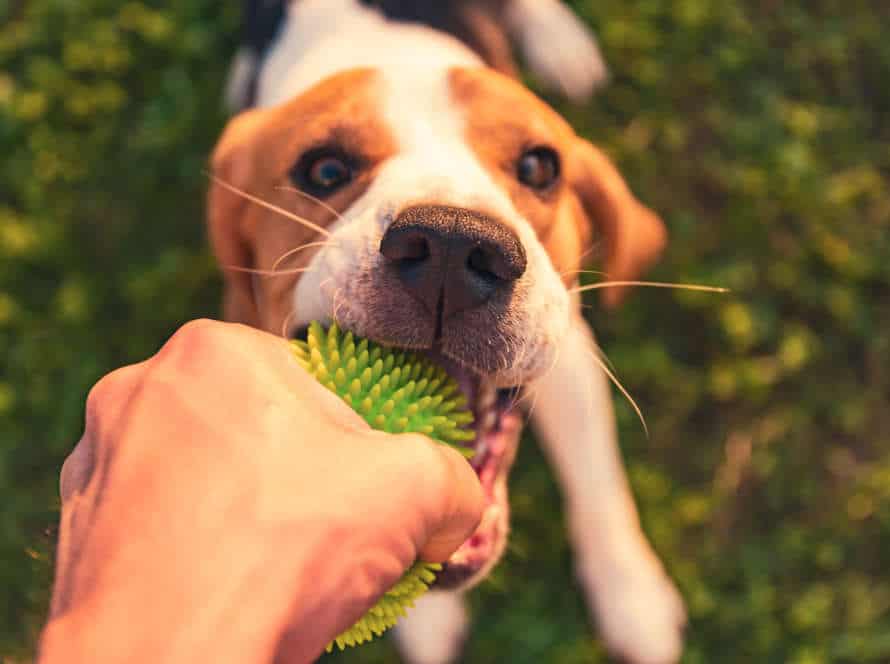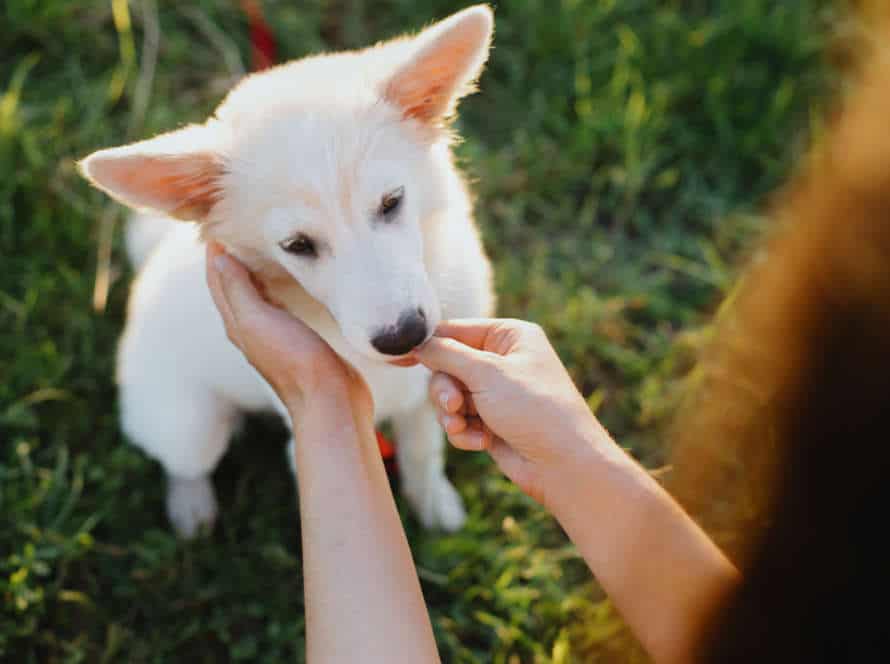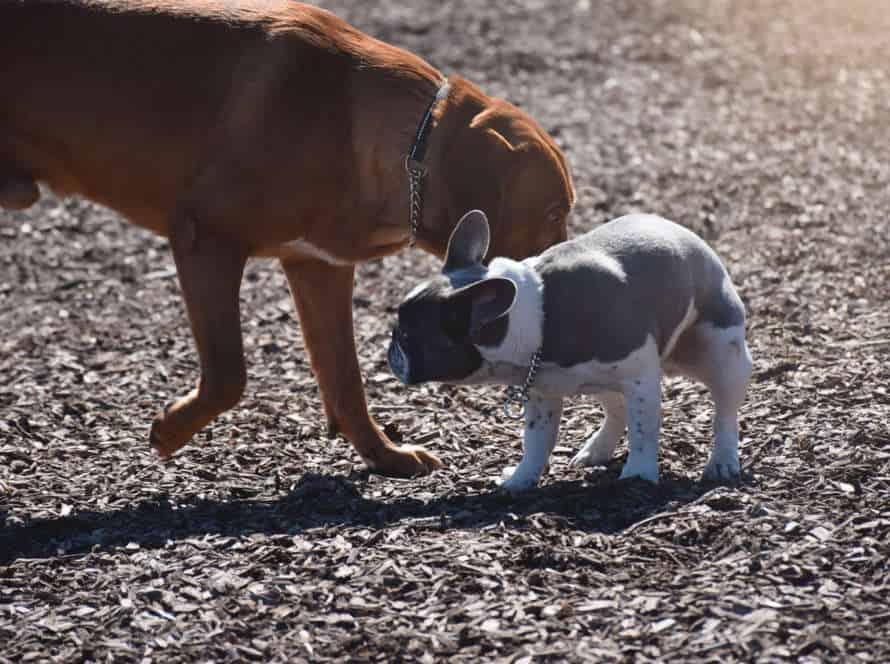Gentle Trick Training: Adapting for Aging Dogs
As dogs age, their capabilities start to decrease. So, regular training techniques may not be suitable anymore. Gentle trick training is a great way to adapt. Here are some ideas:
- Keep training short and spaced out.
- Use yummy treats to keep their focus.
- Don’t do tricks needing physical movement or balance.
- Change existing tricks into simpler ones, or adapt them so they can be done lying down.
- No need for perfection. Congratulate them for small wins!
Pro Tip: Be patient, stay positive, and make it enjoyable for your older pup!
Assessing your dog’s physical limitations
Assessing your aging pup’s physical limits is tough. As they age, their tolerance for physical activity decreases. You must remember this. Knowing your pup’s limits is key for their safety and comfort during trick training. This section will discuss how to evaluate your pup’s physical abilities for their trick training program.
Identifying signs of joint pain and stiffness
Be sure to watch out for signs of joint pain and stiffness in your pup. These can include:
- Difficulty getting up or lying down
- Reduced enthusiasm for exercise or play
- Reduced mobility
- Limping or favoring one leg
- Stiffness or lameness after exercise
- Trouble with stairs or jumping
- Chronic fatigue
- Yelping/wincing when touched
If any of these signs occur, contact your vet. With gentle trick training, you may be able to help your aging dog stay active and reduce joint pain.
Recognizing decreased mobility and energy levels
As our furry friends age, recognising decreased mobility and energy is key to their well-being. Here are signs to watch for in your ageing doggos, plus tips for adapting trick training.
Signs of decreased mobility/energy:
- Limping or stiffness
- Difficulty standing, sitting, climbing stairs
- Unwillingness to run or play
- Weight gain/loss
- Excess sleeping/resting
Tips for adapting trick training:
- Choose low-impact tricks, avoiding jumping/running
- Use soft treats, easy to chew
- Change environment, remove obstacles/hazards
- Shorten sessions, more rest breaks
- Listen to your doggo, don’t force them
Pro tip: Mental stimulation through trick training is great for maintaining cognitive functions and strengthening your bond.
Understanding age-related health conditions
As our furry pals age, they may have certain health problems that could affect their mobility and overall wellbeing. Here are a few common age-related issues to be aware of:
- Arthritis: This causes joint pain, stiff joints, and reduced movement. Your pup may have trouble walking, climbing stairs, or getting up.
- Cognitive dysfunction: Older dogs can develop similar issues to dementia or Alzheimer’s in humans, like memory and learning problems, or changes in behavior.
- Dental disease: Older dogs may have tooth decay, gum disease, or even lost teeth, making it hard for them to eat.
- Vision and hearing loss: Just like humans, dogs may lose their senses as they age, which can alter their behavior and daily activities.
To make things easier, you can:
- Get soft bedding
- Raise food and water bowls to a comfortable level
- Provide low-impact exercises
- Start teaching tricks using positive reinforcement
Adapting training methods
Training an elderly pup can be hard. As they age, their physical activity and agility decreases. But, with the right alterations, you can still utilize positive reinforcement-based training! Trick training is a great way to keep your dog happy and active. Here’s how you can adjust training methods for your aging dog:
Using positive reinforcement to encourage learning
Positive reinforcement is a great way to train dogs—young or old! It helps senior dogs stay mentally and emotionally healthy. Here’s how to make it work for aging pups:
- Use yummy treats like boiled chicken, cheese, or liver.
- Keep the training sessions short.
- Use verbal and hand cues to show what you want.
- Don’t expect too much from your senior pup.
- When they do something right, reward and celebrate!
Remember, positive reinforcement isn’t about punishing mistakes. Pro tip: Patience and consistency are key. Plus, lots of unconditional love!
Shortening training sessions
As dogs get older, it may be harder for them to keep up with longer training sessions. Adapt your methods to suit their needs better. Shorten the training sessions to help your aging dog.
Here are some tips:
- Limit training to 10-15 minutes max. This allows your dog to stay focused without getting too tired.
- Break the exercise into small steps. This helps your dog understand and progress slowly.
- Use positive reinforcement and rewards for training. This builds confidence and keeps your dog motivated to learn.
Adapting your methods is key to maintain your dog’s physical and mental health. Short training sessions are perfect for teaching your dog new tricks.
Breaking tricks into smaller steps
For aging dogs, breaking tricks into smaller steps is key. Like humans, they can experience health issues and reduced sharpness, so it can be difficult to learn new things. Here’s how to do gentle training:
- Identify the trick.
- Break it down into achievable parts.
- Use positive reinforcement, like treats and praise.
- Keep training short and frequent.
- Adjust the environment to suit the dog’s needs – a ramp for mobility issues, for example.
By breaking tricks into simpler steps, it’ll be easier for your aging pooch to learn new stuff. It’ll keep their mind sharp and up their quality of life.
Gentle tricks for aging dogs
As your pup gets older, they can stay energetic with gentle trick training. This stimulates them physically and mentally, and also helps improve the bond between you and them. There are lots of tricks you can teach your aging pet that’ll be fun for both of you! Here are some gentle tricks to keep your pup involved and entertained:
“Say your prayers”
“Say your prayers” is a trick you can teach your elderly pooch. It involves getting them to place their paws on a bed or other raised platform, and bow their head as if praying. This trick helps improve your dog’s balance and movement in a subtle way. Here’s how to do it:
- Get your canine to sit or stand near the raised surface.
- Place a treat on it, and encourage them to get it with their paws.
- When they put their paws on the platform, give them a reward and praise them.
- Raise the treat higher, so your pup has to reach for it.
- When your dog is okay with the raised surface, give a command like “Say your prayers” and lure them with a treat until they bow their head.
- Be patient, and practice in short sessions. Reward your pup’s efforts with treats and compliments.
Pro tip: Be kind while training your elderly pup. Pay attention to their needs, and adjust the training as required.
“Roll over”
Teaching your aging pup the “roll over” trick is a soothing way to stimulate their mind and body. Plus, it strengthens the bond between you and your furry friend. Assess your dog’s mobility level and overall health before starting. If they have arthritis or joint pain, avoid putting pressure on those areas. First, teach them to lie down on command. Then, gently guide them to roll over with a treat or toy. Be patient and reward them each time they complete the trick. Remember to keep it gentle and low-impact for your aging pup. With practice and patience, you can help your furry friend stay active in their golden years.
“Paw”/”High five”
Teaching your aging pup the “Paw” or “High Five” trick? A gentle way to keep their mind active without straining their body.
Here’s how to do it:
- Keep the training short and often.
- Small treats and positive reinforcement to keep them motivated and interested.
- Choose tricks that don’t require excessive movement or jumping.
- If they seem to be having trouble or getting tired, take a break and try again later.
- Be patient and kind, and adjust the training methods to fit their age.
Pro tip: Trick training is a great way to bond and keep your pup’s mind sharp!
Enrichment activities for senior dogs
We, as dog owners, should remember that our canine friends age like us. As they get older, activities that were once easy become more challenging. It is up to us to make sure our senior dogs are active and having fun. Trick training is a great way to do this! Let’s explore how to use trick training to give enrichment activities to your ageing pup.
Puzzle toys and games
As canines age, their mental skills may decrease, and they may be less active. Doing simple trick training and playing with puzzle toys and games can help elderly dogs keep their mental sharpness and physical capabilities. Here are a few enrichment activities for senior doggies:
- Puzzle Toys: Have your pup play with treat-dispensing balls, puzzles, and mazes. This can keep them mentally engaged and physically active, while still making them work for their food.
- Games: Games like hide-and-seek and fetch can be changed to fit the needs of senior pooches. Try using soft balls or scented toys to help them find hidden treats.
- Gentle Trick Training: Instead of complicated tricks, focus on basic commands like “sit” and “stay”. This can help keep their minds alert while also teaching obedience and improving mobility.
Remember, dogs age differently, and some seniors may have restrictions. So it’s important to evaluate their abilities before deciding on any activities.
Gentle exercise activities
As dogs age, exercise activities should be gentle to fit their physical and mental limitations. Trick training is great for senior dogs who can’t do demanding activities. Here are some tips:
- Choose low-impact tricks like paw shakes, spins, and rolling over.
- Use a soft, easy-to-grip toy.
- Train for 5-10 minutes and take breaks.
- Give high-value treats like cooked chicken or cheese to motivate them.
- Check with the vet before starting any new exercise with your senior dog.
Comfort and relaxation activities
As dogs get older, physical limitations may make it hard for them to do activities they once enjoyed. But, senior dogs have lots of opportunities for enrichment – like gentle trick training.
Adapt the trick training to fit your pup’s physical abilities and limits. Here’s how:
- Choose tricks that don’t need much jumping or crouching.
- Use treats and toys to motivate and reward your senior pup.
- Split complex tricks into simpler parts, so they can learn faster.
- Take frequent breaks and don’t push your pup too far. The goal is comfort and relaxation, not exceeding their physical limits.
Frequently Asked Questions
1. Can I start gentle trick training with my aging dog?
Yes, you can start gentle trick training with your aging dog as long as you adjust the exercises to their physical limitations.
2. What are some examples of gentle tricks I can teach my aging dog?
You can teach your aging dog tricks such as giving a paw, high five, playing dead, and rolling over.
3. How can I adapt trick training for my aging dog?
You can adapt trick training for your aging dog by choosing age-appropriate exercises, taking breaks more frequently, and using positive reinforcement methods.
4. Is it safe to teach an aging dog to jump over obstacles?
No, it’s not safe to teach an aging dog to jump over obstacles as it can cause injuries. Instead, you can teach them to go through hoops or tunnels.
5. How often should I train my aging dog on new tricks?
You should train your aging dog on new tricks for short sessions a few times a week so that they don’t get exhausted or overwhelmed.
6. Can gentle trick training benefit my aging dog’s mental health?
Yes, gentle trick training can benefit your aging dog’s mental health as it stimulates their minds and provides them with mental stimulation and a sense of accomplishment.

